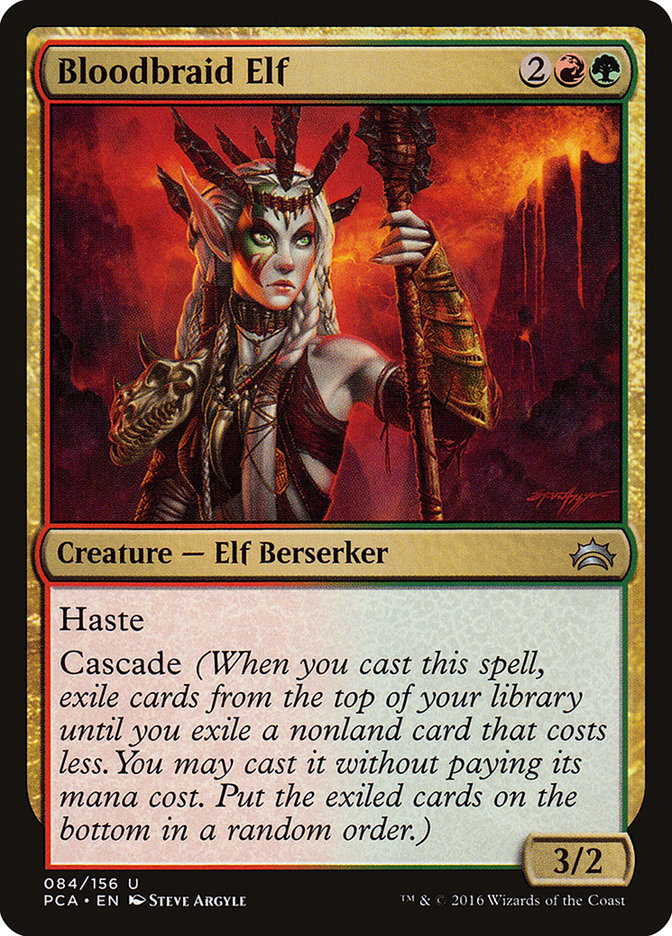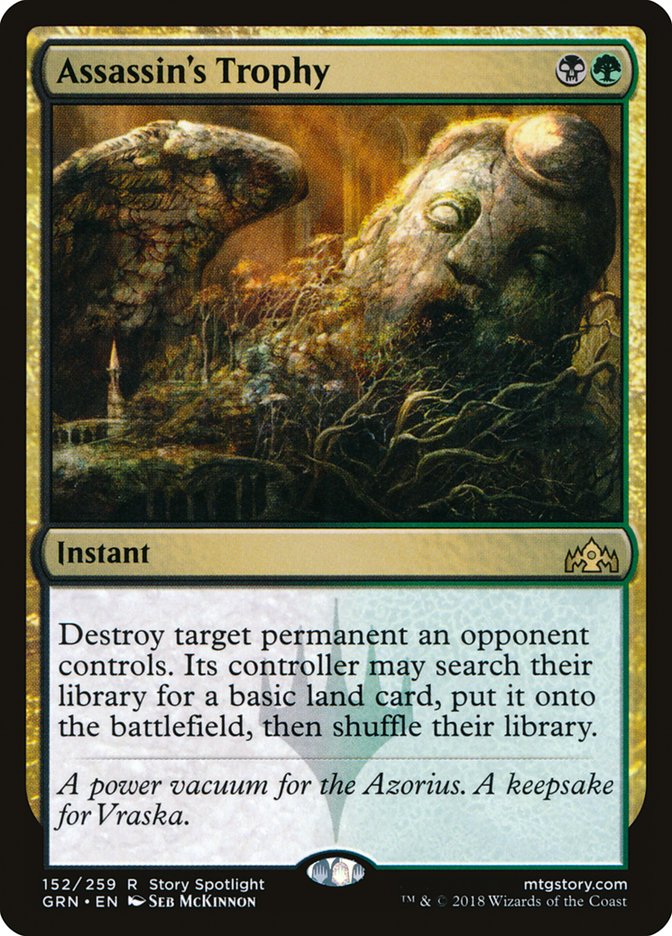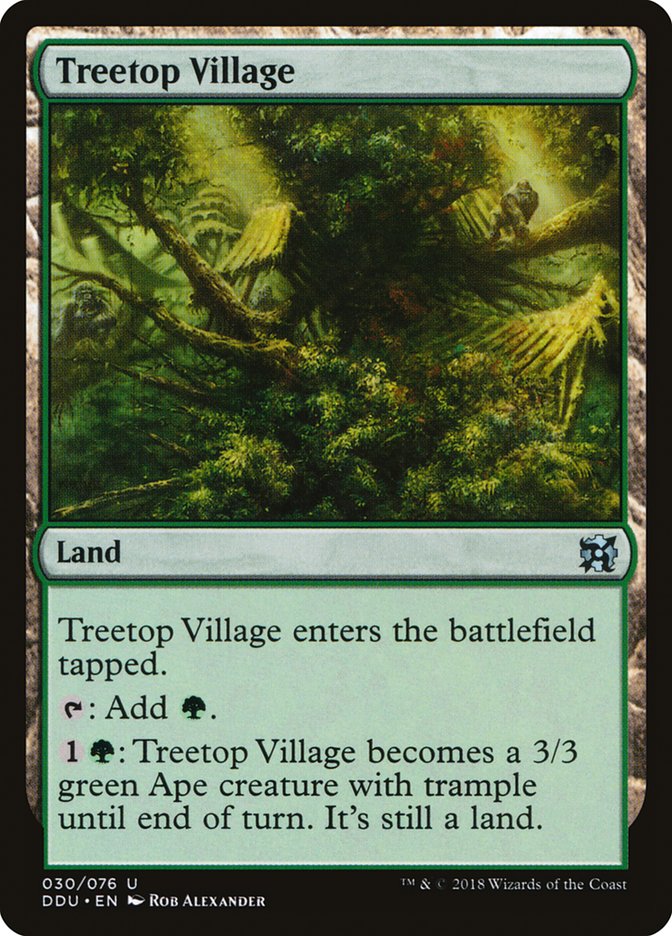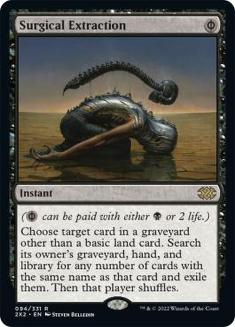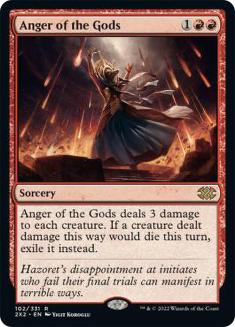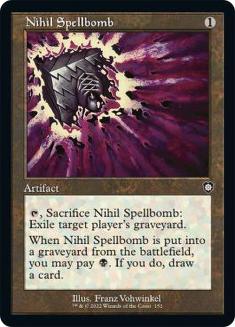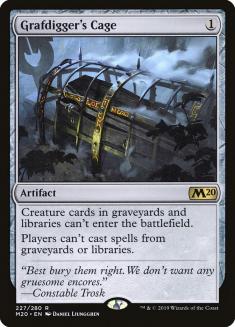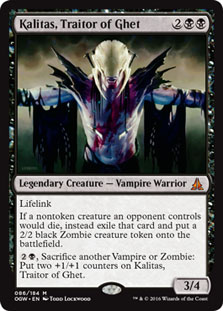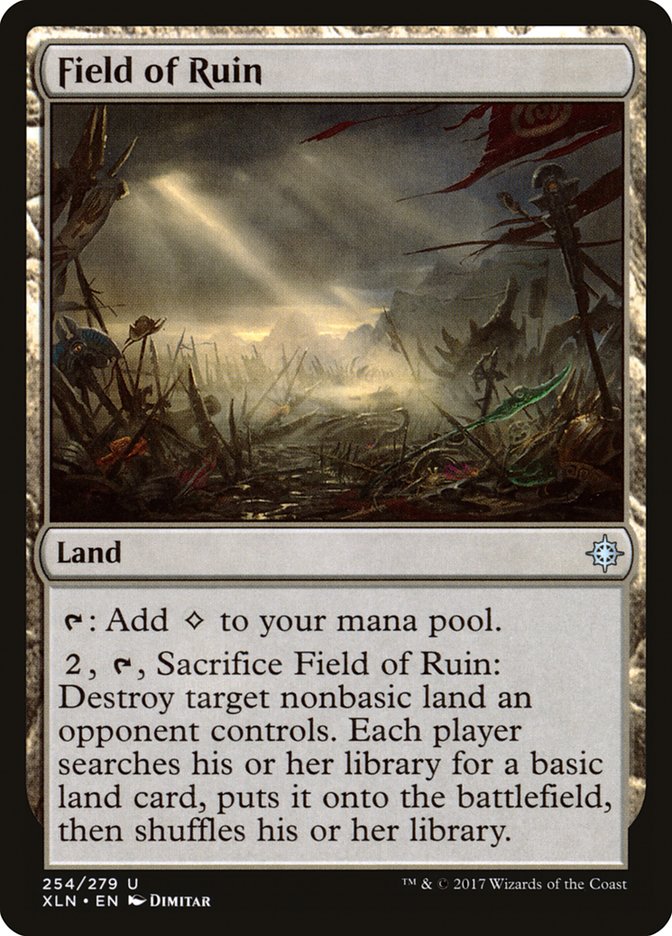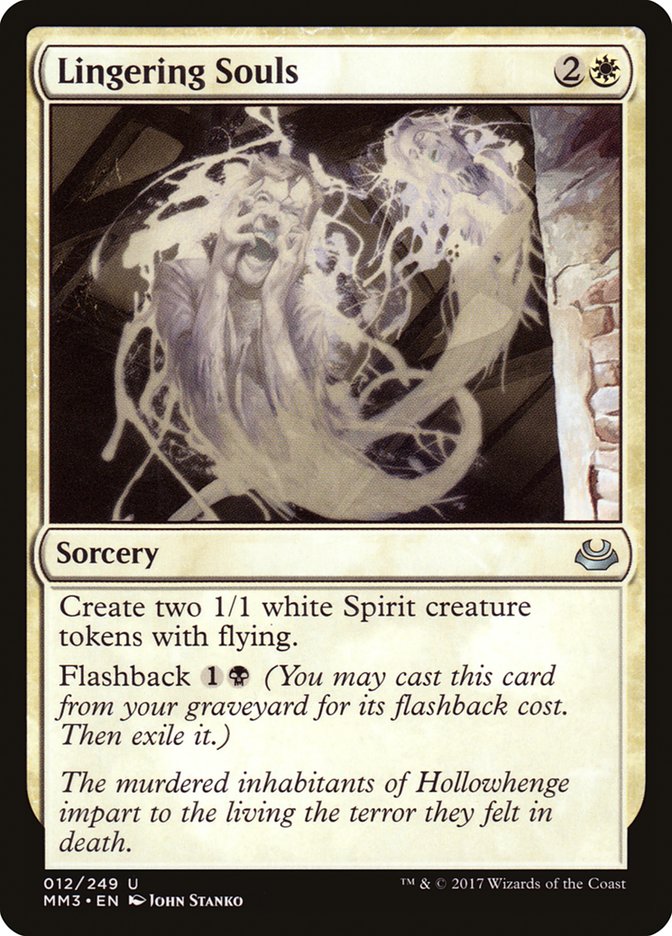If there’s one thing you can be sure of when it comes to players who are masters of a specific Modern deck, it’s that they probably have played it in more than a few tournaments where they shouldn’t have. I’ve been Jundine for a while now, and I know that’s true for me.
I’ve played Jund in upwards of two dozen major tournaments, and yet only count three in which registering Jund cards was a good idea. The first was my first ever tournament with Jund, at #SCGNY in 2016 where I finished in the Top 16. The second was one week later: the #SCGINVI I took second in. The third?
Last weekend’s #SCGCHAR, where I collected my third Open Top 8 with Jund.
I gave up on Jund late in 2016. It felt like every deck in Modern kept getting better and Jund stayed the same. It was falling behind week after week, set after set, and eventually I couldn’t justify playing it any longer. I spent the rest of 2016 and a lot of 2017 in a state of flux, hopping from Modern deck to Modern deck, looking for the one that would click with me the way Jund did but also get me the wins I wanted. My search was in vain.
In the middle of 2017 my search led me back to decks in the Golgari Midrange space. Jund, my one true love, was forever lost to me, but Abzan Traverse looked to be the next best thing. I dallied with Abzan Traverse for a few months, but it just wasn’t the same. Unfortunately, it was close enough to Jund that my desire to return to Junding flared higher than my desire to win matches and, in the beginning of 2018, I picked up my Raging Ravines once more. This proved to be a fantastic decision, if made for all the wrong reasons.
I returned to Jund before Bloodbraid Elf did. I experimented with Goblin Rabblemaster in an attempt to breathe new life into Jund, and found more success in doing so than I deserved. At that time, I chose Jund not because it was good but because I knew I was good with it. Then Bloodbraid Elf got unbanned, and I started playing Jund because it was better than it was the week before and might actually be good.
For a while, I thought Bloodbraid Elf had done the trick and made Jund good again. I wasn’t confident in that opinion, but I knew that my results since the unban were impressive and that was good enough for me. For a while, at least. As the months wore on, the common wisdom shifted in the direction of Jund still not being very good. My results with the deck also started to decline, so I figured that Bloodbraid Elf had made the deck better, but not better enough.
Still, I couldn’t be too sad. I had relived the glory days of Jund, scratched my itch to cast Thoughtseize into Tarmogoyf and Top 8ed a couple of tournaments in the process. I started trying other decks out again, delving into the worlds of Mardu Pyromancer and Burn, while still keeping one eye focused on the Jund world. It was with that eye that I first saw this beautiful card:
Instantly, I knew that I’d be playing a lot more Jund in the near future. I didn’t know right away that this card would take Jund to another level; Magic doesn’t work that way. All I knew is that it might be just the thing Jund needed and that was enough for me.
Now it’s a couple of months later and I’ve finally gotten to play my first tournament with Assassin’s Trophy. On paper, my result from it looks identical to the one I got immediately following the return of Bloodbraid Elf: a Top 8 exit. Congrats and condolences, take another shot at the trophy next week. Since they look so similar, you’ll just have to take my word for it: these two Top 8 exits felt very different. With Bloodbraid Elf, my opponents felt unprepared. With Assassin’s Trophy, it felt like I was ready and it didn’t matter how prepared my opponents were.
Why? We’ll get to that.
List Minutiae and the Metagame
I want to tackle the questions of how and why Assassin’s Trophy pushed Jund to the next level when Bloodbraid Elf couldn’t, but first we need to take a close look at the list I played last weekend.
Creatures (14)
Planeswalkers (4)
Lands (24)
Spells (18)

Sometimes, my lists are well-tuned machines that I’ve spent oodles of time shaping. Others, they’re shots in the dark. With Pro Tour Guilds of Ravnica on the horizon and thus most of my attention on Standard and Limited, it should come as no surprise that this list is one of the latter.
Just put the finishing touches on what can generously be called an “experimental” Jund list for tomorrow.
Excited to play!
— Jadine Klomparens (@thequietfish) October 27, 2018
But even if I had spent weeks testing and tuning Jund before this tournament, whatever list I ended on would still have been a bit of a guess. When Bloodbraid Elf got unbanned, I had tons of history with the card to look back on and figure out what needed to change in Jund to accommodate her. Assassin’s Trophy came with no such history, so figuring out what changes to make was a much less certain affair.
Let’s start by looking at the changes that had nothing to do with Assassin’s Trophy. Dredge was the boogeyman waiting in the wings in the days leading up to #SCGCHAR, which led me to prepare primarily for a field of Dredge and decks that beat Dredge: non-interactive decks, primarily land-centric strategies and combo decks.
Prior to #SCGCHAR I had championed trimming down to three Dark Confidant and playing the full playset of Bloodbraid Elf. I still believe that seven is the correct number to have total of these two cards but think that reversing the split is better for the current climate.
Going down to three Dark Confidants was primarily a reaction to the rise of Humans. Dark Confidant can be very good against the small-ball aggressive strategies, but it can also be a huge liability. The first copy is generally quite good for you but drawing two is a huge problem. At the same time, Bloodbraid Elf is very good against these strategies, giving you a combat-ready body attached to another good spell, letting you pull ahead without taking damage. In metagames where decks like Humans, Affinity, and Spirits are the best decks, I strongly recommend playing only three Dark Confidants.
The flip side is that against most non-interactive decks, Dark Confidant is one of the best cards in your deck, full stop. Dark Confidant’s downside is negligible in these matchups, and while it doesn’t interact itself, it does ensure that you see enough cards to be able to present the necessary quantity of interaction while still consistently pressuring their life total. Symmetrically, Bloodbraid Elf is suboptimal in these matchups. Four mana is too much to pay for a card that interacts as unreliably as Bloodbraid Elf in these matchups. When non-interactive decks are the gold standard in the metagame, running four Dark Confidant and three Bloodbraid Elf is the way to go.
Despite loving Treetop Village, I registered zero copies of it last weekend and believe I was correct to do so. Treetop Village is great when Azorius-based control decks are in the forefront of the metagame, as it gives you more plays to make when you don’t want to commit any harder to the battlefield and lets you pressure planeswalkers earlier than Raging Ravine allows you to. It’s good for similar reasons when midrange mirrors are what you expect, but when your opponent is trying to do very unfair things, chip shots with a Treetop Village is not how you want to spend your mana. The final nail in the coffin for Treetop Village right now is that it’s hard to play when you want to run Anger of the Gods in the sideboard, and Anger is very good right now.
One last note on the construction of my maindeck before we move on to the sideboard and why Assassin’s Trophy is so good: 24 lands. I’ve been a huge fan of 25 lands in Jund ever since Bloodbraid Elf joined the party, but I think Assassin’s Trophy changed the game again. Basically, Bloodbraid Elf wants you to play a higher curve. The more often you hit a three-cost spell with Bloodbraid Elf, the better your Bloodbraids are. This leads you to play a 25-land deck with eight or more three-drops on top of your playset of Bloodbraids, along with enough creature-lands to make sure your mana is useful to you for the duration of the game.
Assassin’s Trophy costs two and not three, and we must cut something to make room for our Trophies. The one-mana spells are virtually untouchable, as Jund needs to have one-mana interaction to keep pace with the Modern world. The threats are similarly locked in, which leaves us with the three-mana spells as our cut. Bloodbraid Elf and Assassin’s Trophy conflict in this way, but Trophy is good enough for it to be worth it.
Once you cut one or more three-drops and a Bloodbraid Elf, 24 lands start to make sense. That we’re not interested in Treetop Village at the moment makes it a surety.
Why Is Jund Good Again?
Now that I’ve satisfied my fellow Jund junkies with a look into the intricacies of my #SCGCHAR list, it’s time to dive back into our main question: how did Assassin’s Trophy restore Jund to its former glory when even Bloodbraid Elf wasn’t equal to that task?
Remember this sentence? I played Jund into a field of Dredge, Amulet Titan, TitanShift, Tron, and Storm. Almost all of these are historically terrible matchups for Jund, but I made it to the Top 8 anyway. I wasn’t wrong about my metagame prediction either, nor did I just luckily dodge these matchups until the Top 8. Counting my Top 8 loss to Becky Adlman on TitanShift, I was a combined 6-2 against these decks, with one of those losses being to Storm, the best matchup of the lot. How is this possible?
Assassin’s Trophy is a truly magical Magic card. Despite being nigh-unplayable in the majority of these matchups, it made them all much better. In the article I wrote about Assassin’s Trophy right when it was previewed, I focused on the idea that Jund’s sideboard would become much better because Trophy would make its maindeck much more flexible. That idea proved enough to get me into the Top 8. Just look at my sideboard:
I had a whopping seven pieces of graveyard hate in my sideboard for the Dredge matchup, with an extra Nihil Spellbomb hanging around in my maindeck. Before Guilds of Ravnica, this would have been impossible. Playing this level of graveyard hate without sacrificing an absurd amount in every other matchup was just not something you could do a month ago.
Somehow, despite playing these seven pieces of Dredge hate, I still found room for three copies of Fulminator Mage. I considered Fulminator to be mandatory before the printing of Assassin’s Trophy; now I think it’s something to play when you have reason to expect lots of land decks, like last weekend. TitanShift is still an abysmal matchup that Trophy didn’t improve one whit, but Tron and TitanShift are both considerably better than they used to be.
Quick aside on the Tron matchup: it’s legitimately fine now. I doubt anyone will believe me, but it was closer than anyone thought before the printing of Assassin’s Trophy and too close to call now that Trophy has been released. Yes, they can still hard-cast their spells even if you Trophy them off Tron. The thing no one’s talking about with Trophy in the Tron matchup is that it’s not just a tool to keep them away from Tron. It’s a split card that can either slow them down or answer one of their huge payoff spells. Contrary to popular opinion, Jund doesn’t lose the second a Wurmcoil Engine or a Karn Liberated hits the table.
Ultimately, the truth about Jund is that the deck is designed to be less powerful than its adversaries. Its goal is to have a way to stop the first X things the opponent tries to do and end the game before they try the X+1th thing. As Modern became more diverse, Jund became worse because it had to stretch itself too thin trying to answer everything. Assassin’s Trophy gives you so much game against the field that your sideboard is free to attack your expected metagame, not just get you to a passable 60 in most matchups.
But Not Just Jund
I played Jund last weekend but can’t promise that will always be the case for me. Unlike Bloodbraid Elf, Assassin’s Trophy is a boon to the whole Golgari Midrange family of decks, and I have every reason to believe that all of them will be playable at different points in time. With Assassin’s Trophy, the traditional weaknesses of the archetype are greatly alleviated.
When Assassin’s Trophy was first shown to the world, Golgari Midrange got a lot of hype. Playing four copies of Field of Ruin really minimizes the downside of Assassin’s Trophy and the combination of those two cards is legitimately powerful. The problem with the archetype is Tireless Tracker.
Yeah, you read that right. Tireless Tracker gets a lot of love in Modern, but none from me. Three mana for a 3/2 is a joke and having to spend two mana to get a card is only good in attrition strategies when you’re already at parity. Tireless Tracker puts games away when you’ve managed to execute your strategy but does nothing to help you do so.
Still, despite being forced to play Tireless Tracker, I expect Golgari Midrange to be the go-to Assassin’s Trophy deck whenever the two big things in the format are three-color midrange and non-interactive strategies. Golgari Midrange is much better than Jund in midrange mirrors thanks to Field of Ruin, and better against land strategies thanks to Field of Ruin. It’s worse against non-land-based combo decks, but that seems like a fine trade to make in some metagames.
Abzan is another potential gainer from Assassin’s Trophy. Abzan is the best Assassin’s Trophy deck when Lingering Souls is good. This occurs whenever Modern decides to be a fair format and non-interactive strategies are hard to find. Lingering Souls is an awful threat to rely on when you need to present a fast clock, but great when you expect a lot of aggressive and midrange decks.
One way or another, we’ve finally returned to a reality where Thoughtseize into Tarmogoyf is an opening to be feared, not pitied. When I play Jund next week, it will be because I think it is a legitimately great choice. Underrate Jund and its brethren at your own peril.



